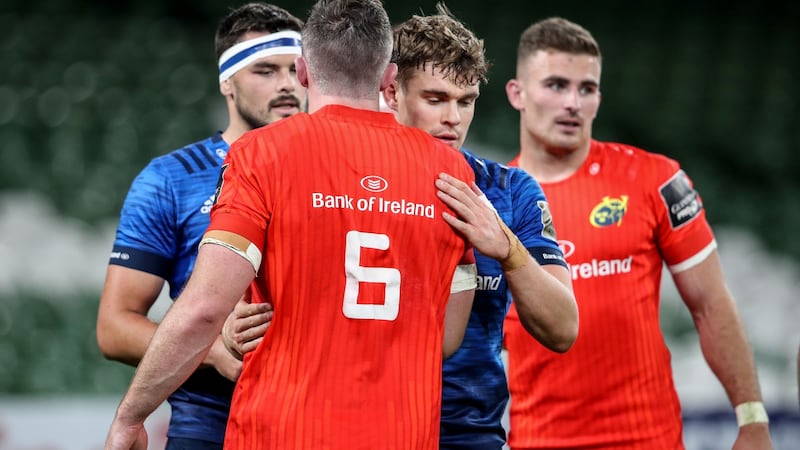Empty rugby stadiums are cold and melancholic structures. Without people, arenas such as Eden Park, Twickenham, Ellis Park and Lansdowne Road are just lifeless exoskeletons. Dormant until match day, when the flow of human energy trickles into the veins and arteries of the beast. Then, as if by some form of alchemy, phoenixlike, each great stadium resurrects itself into its own unique individual being.
When rugby cathedrals are full, the people create an exhilarating, tangible energy that impacts all who encounter the arena. It is impossible not to be motivated when playing in front of 60,000 at one of these historic venues.
Last week the Aviva stadium was empty. The battalions of those headache-inducing drummers, who are paid to throb out ancient Celtic rhythms were absent. Budget cuts to the marketing departments pyrotechnics account condemned those humongous gas jets, that do nothing more than add to rugby’s carbon footprint, to remain in the warehouse in deep storage.
They were not missed last Saturday, but the fans were. In their absence, we were given unfiltered, real rugby noise.
As the whistle shrilled to commence play between Munster and Leinster, the clarity of the real sounds created by deeply committed players, giving their all for victory, came to our ears and gave the game a new authenticity.
Last weekend the Irish players proved that highly competitive people do not need a crowd to produce quality performances
The slap of colliding bodies, followed by the loud exhaling of lung fulls of air, mixed with the constant flow of loud player communications, hit our living rooms. As if for the first time the audio was now correctly aligned with the pictures. Instead of hearing “I will walk 500 miles,” for the 500th time at a rugby match, we had a ringside seat into the realities of the grunts, bangs and sledging. It was raw, real and loud.
Last week’s matches, played in front of row after row of empty seats, proved that when the Irish provinces go head to head, the motivation to perform does not come from the supporters. I hate to tell you all, but the so called red and blue armies don’t drive that great rivalry.
The high quality match that Munster and Leinster produced last week was the product of a much deeper motivation than fans cheering. The red Munster jersey is like a matador’s cape that provokes a hoof stamping reaction from deep within the Leinster bull. While Leinster’s St Patrick’s blue makes the hairs on the back of that tough old Munster dog rise and bristle.
Until you have been exposed to this rivalry at first hand you can’t fully appreciate how deeply each organisation dislikes each other. The grudges are passed down form one generation of players to the next. The wrongs, both real and imaginary, that need to be revenged are explained, alongside the great victories that must be upheld.
Behind the sanctity of the changing room doors, old stories are retold. Ones that will never reach the public’s ears. Stories of anger, disrespect, physical and verbal confrontation. Legends of personal feuds that have fuelled this ultra competitive rivalry.

Most of what Irish rugby has achieved over the past two decades has its genesis in the long feud between Leinster and Munster. The battle for bragging rights has driven performance and forced growth. When the green jersey is pulled on, a truce is called and all is forgiven. Once the truce is dissolved and hostilities are recommenced, as we all witnessed last week, the feud that is both personal and blood deep recommences unabated.
Ulster and Connacht have also benefited from the exceptionally high standards set by this great rivalry, because it has driven a demand for excellence across the entire island. Coaches Dan McFarland and Andy Friend are leading positive growth at both Ulster and Connacht, that is producing high quality performances within their respective clubs, as was displayed last week with some sparkling play. Kieran Marmion's try was a piece of rugby art.
Last weekend the Irish players proved that highly competitive people do not need a crowd to produce quality performances. With the Aviva having an atmosphere like an empty hay barn, the players of all four provinces delivered and performed. We should also remember the true sacrifices that training and playing in a Covid-19 world has forced on all the players and staff.
Players, staff, administrators and coaches take a bow.
Antoni Gaudí, the brilliant Catalan architect, whose radical designs created the unimaginable beauty of the Basilica, La Sagrada Familia, once said, “to do things right, first you need love, then technique.”
In rugby, a love for winning without technique produces physicality.
The Irish provinces obviously love what they do because both matches were immensely physical, if not technically brilliant.
It takes rugby-educated personalities, dripping with competitiveness, passion and pride to produce redline levels of performance and physical aggression in a lifeless empty stadium. Last weekend’s matches placed on show the passion, skill, determination and competitive nature of Irish inter provincial rugby.
Leinster are the undisputed leaders of the provincial pack, but Munster, Ulster and Connacht are growing and improving. They will continue to hound Leinster, who must evolve or their mantle will fall to one of the chasing contenders.
That is a very healthy state of affairs for the continued success of Irish provincial rugby and an exceptional opportunity for the Irish national team to harness the talent, passion and hatred of defeat that is so obvious in all the provincial teams.















